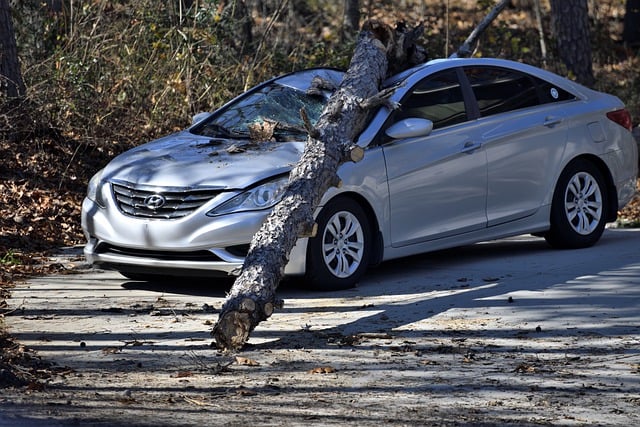Full Coverage Insurance offers robust protection beyond basic requirements, encompassing auto, home, and personal liability scenarios. It includes collision, comprehensive, rental reimbursement, and roadside assistance, covering vehicle damage, theft, natural disasters, and medical expenses. By understanding exclusions and comparing policies, individuals can select tailored coverage for peace of mind against diverse risks, ensuring a smooth claims process and financial security in unforeseen events.
“Unravel the complexities of Full Coverage Insurance and its transformative impact on your peace of mind. This comprehensive guide navigates the intricate world of protection, shedding light on why it’s more than just an add-on—it’s a safety net. From auto to home and beyond, we explore diverse policy types, their benefits, and how they differ from minimum liability insurance. Learn the ins and outs of selecting the ideal provider, understanding common exclusions, and what to expect during the claims process. Embrace informed decision-making with our in-depth analysis of Full Coverage Insurance costs.”
Understanding Full Coverage Insurance: What It Covers and Why It Matters

Full Coverage Insurance is a comprehensive protective measure for individuals and assets, offering peace of mind by shielding against potential risks and financial burdens. This type of insurance goes beyond basic coverage, providing extensive protection that includes not only typical risks like accidents and natural disasters but also more specialized perils. It’s designed to ensure that policyholders are fully secured in various scenarios, from vehicle damage and theft to home repairs or personal liability claims.
Understanding what Full Coverage Insurance covers is key to making informed decisions. This type of insurance typically encompasses a wide range of incidents, ensuring that policyholders don’t have to bear the financial brunt of unforeseen circumstances. It includes liability coverage for damages caused to others, asset protection through replacement or repair, and sometimes even additional benefits like rental reimbursement during repairs. By having Full Coverage Insurance, individuals can navigate life’s uncertainties with confidence, knowing they are prepared for whatever comes their way.
Types of Full Coverage Policies: Auto, Home, and Beyond

Full Coverage Insurance offers a comprehensive protection package that goes beyond basic coverage, ensuring policyholders are shielded against various risks. The types of full coverage policies available cater to diverse needs, with three primary categories: Auto, Home, and Beyond.
Auto full coverage insurance is designed to protect against damages to your vehicle, including liability for accidents causing property damage or injury to others. Home coverage provides a similar level of protection for your residential property, offering peace of mind against unforeseen events like natural disasters, theft, or vandalism. Beyond these core areas, full coverage policies can extend to other valuable assets and responsibilities, such as personal liability, medical expenses, and even loss of income, ensuring a robust safety net for policyholders across various aspects of their lives.
Benefits of Opting for Comprehensive Protection

Opting for full coverage insurance offers numerous benefits that go beyond meeting minimum legal requirements. It provides drivers with peace of mind, knowing they’re protected from a wide range of potential risks and financial burdens. Comprehensive protection includes damage caused by accidents, natural disasters, theft, vandalism, and even mechanical failures, ensuring that policyholders are not left with substantial out-of-pocket expenses in the event of an unforeseen incident.
Full coverage insurance also streamlines the claims process, as most policies cover repairs or replacement of vehicles without needing to rely on costly deductibles. This means drivers can quickly get back on the road after an incident, minimizing disruption and stress. Moreover, full coverage often includes additional perks like roadside assistance, rental car coverage during repairs, and protection against lawsuits, offering a comprehensive safety net for both vehicle and driver.
How Full Coverage Differs from Minimum Liability Insurance

Full Coverage Insurance offers significantly more protection than Minimum Liability Insurance. While minimum liability covers only the most basic types of damage and injuries, full coverage encompasses a broader range of potential risks. This includes collision coverage, which protects against damages to your vehicle from accidents, as well as comprehensive insurance, which covers damages from events like theft, vandalism, or natural disasters.
In contrast, Minimum Liability Insurance typically focuses on compensating third parties for bodily injury and property damage. It does not protect the policyholder’s vehicle or assets. This means that if you’re in an accident and your car is damaged, or if it’s stolen, you might not be fully covered without Full Coverage Insurance.
Selecting the Right Provider: Tips for Choosing a Full-Coverage Insurer

When selecting a full coverage insurance provider, it’s crucial to consider several factors that go beyond just the cheapest quote. Start by researching insurers with a solid reputation for customer service and claims satisfaction. Check reviews from independent sources like the Better Business Bureau (BBB) or industry-specific review platforms to gauge their reliability.
Next, compare the types of coverage offered, deductibles, and policy exclusions. Ensure the provider offers comprehensive protection that aligns with your needs. Consider factors like vehicle age, driving history, and intended use when evaluating policies. Reading the fine print is essential to understand what’s covered and what’s not, especially with full coverage insurance, which can have varying interpretations between providers.
Common Exclusions to Be Aware of in Full Coverage Policies

When considering full coverage insurance, it’s crucial to understand that while it provides comprehensive protection, certain situations are often excluded. These exclusions vary across providers but commonly include events like natural disasters, war or civil unrest, and certain high-risk activities. For instance, if your vehicle is damaged during a flood or stolen while you’re participating in an extreme sport, full coverage might not apply without specific endorsements.
It’s important to carefully review the policy details to avoid unanticipated gaps in coverage. Some policies may also exclude liability for personal belongings left in a vehicle or medical expenses incurred outside of a designated network. Being aware of these exclusions allows informed decision-making when choosing your insurance plan, ensuring you’re adequately protected against unforeseen circumstances.
Claim Process: What to Expect When Filing a Full Coverage Claim

When filing a claim with full coverage insurance, understand that the process is designed to provide comprehensive protection for your insured items. The initial step involves contacting your insurance provider as soon as possible after an incident. They will guide you through gathering necessary information, such as details of the event, photos of the damage, and any relevant evidence. This prompt action ensures a smoother claims process.
Expect clear communication from your insurer throughout, explaining each step in detail. They’ll assess the claim, verify coverage based on your policy terms, and provide an estimate for repairs or replacements. Be prepared to supply all requested documentation, including police reports (if applicable), repair quotes, and proof of ownership. The insurance company will then review and process the claim, ultimately disbursing funds according to the agreed-upon terms, whether through direct deposit, check, or another chosen method.
Cost Analysis: Evaluating the Financial Impact of Full Coverage Insurance

When considering Full Coverage Insurance, a critical aspect to evaluate is the financial impact and cost analysis. This type of insurance aims to provide comprehensive protection for your assets, but it comes at a price. By understanding the costs involved, you can make an informed decision about whether full coverage is necessary for your specific situation.
The pricing of Full Coverage Insurance varies based on factors like vehicle value, driving history, and location. It typically includes not just collision and liability coverage, but also comprehensive and medical payments. While this broad protection offers peace of mind, it’s essential to weigh the potential savings from avoiding out-of-pocket expenses in claims against the premium costs. A thorough analysis can help you determine if the financial burden aligns with your risk tolerance and budget.
